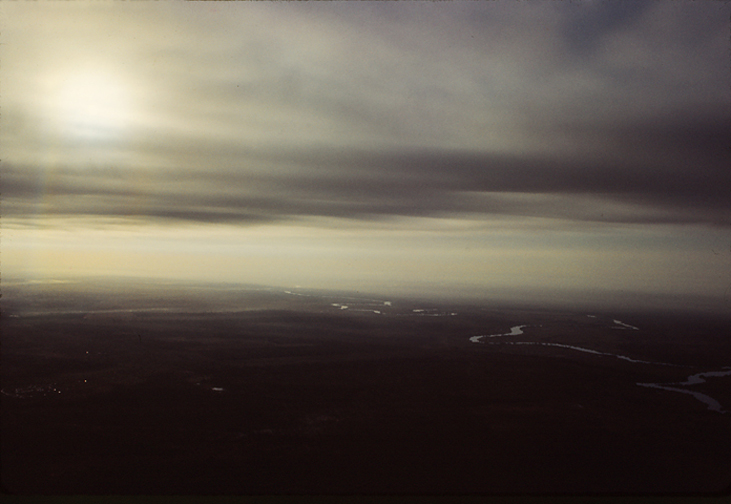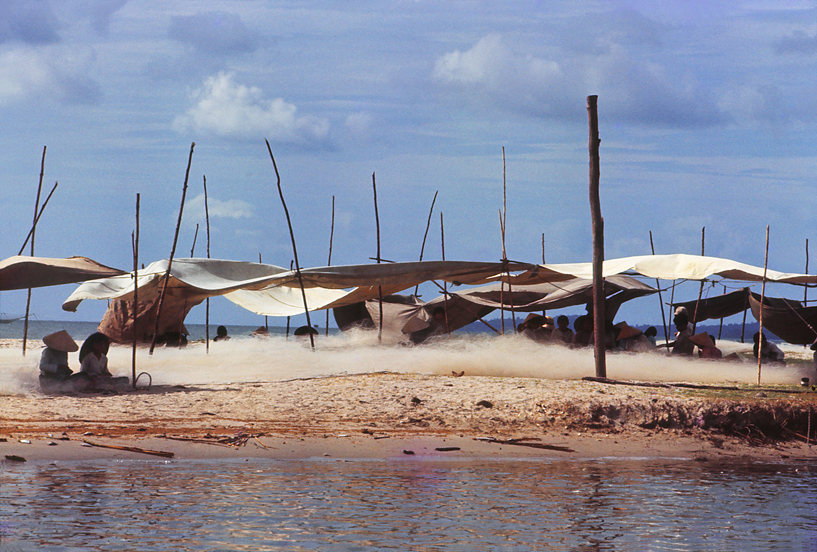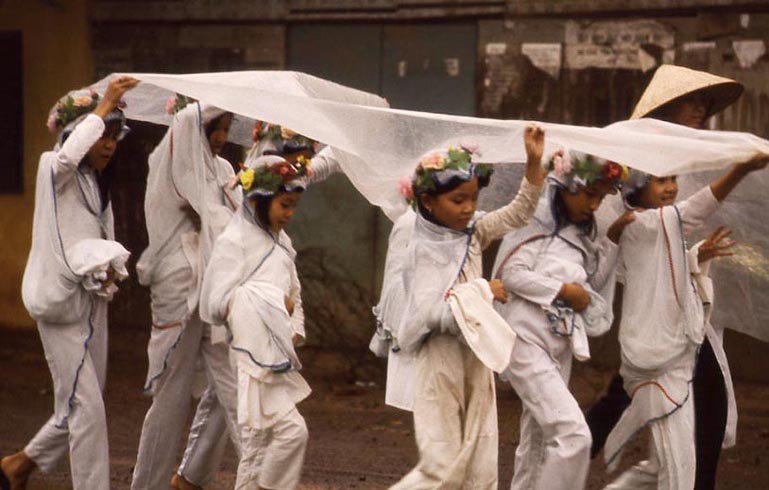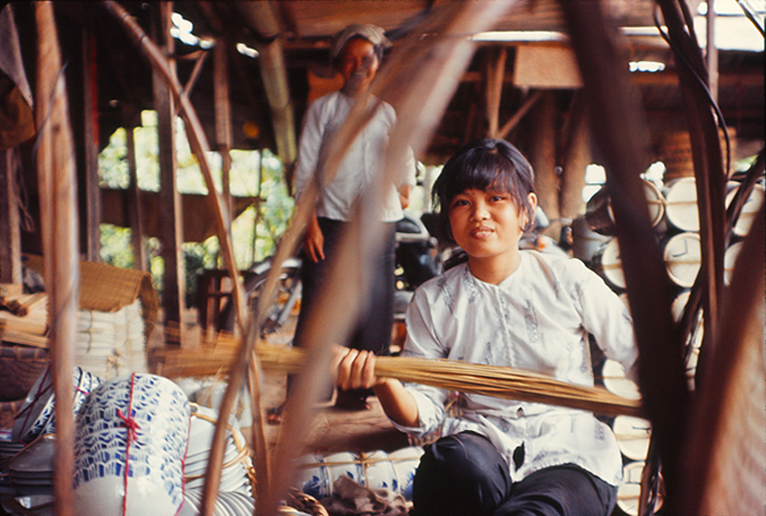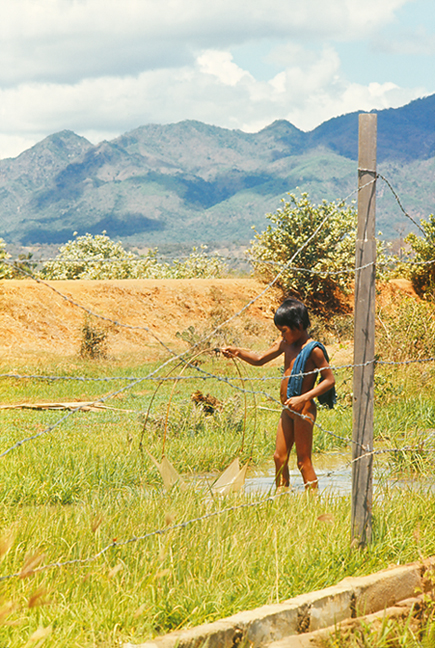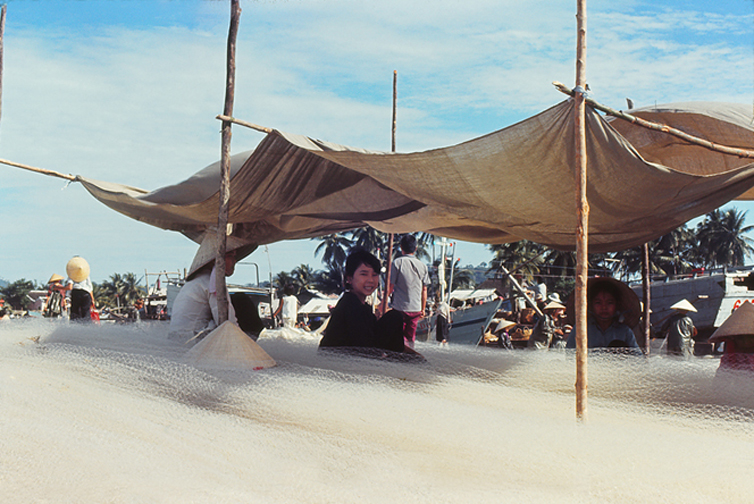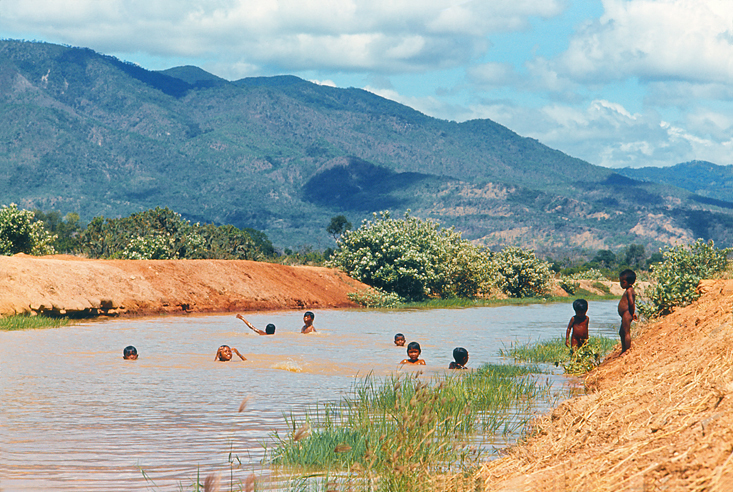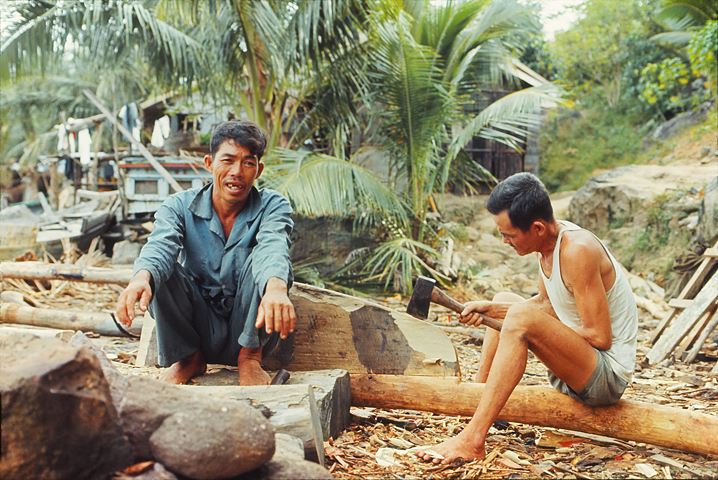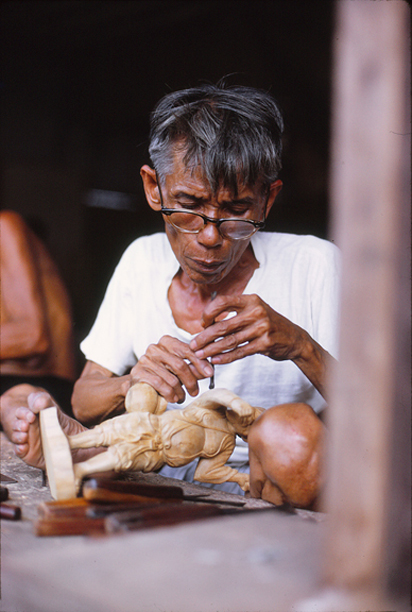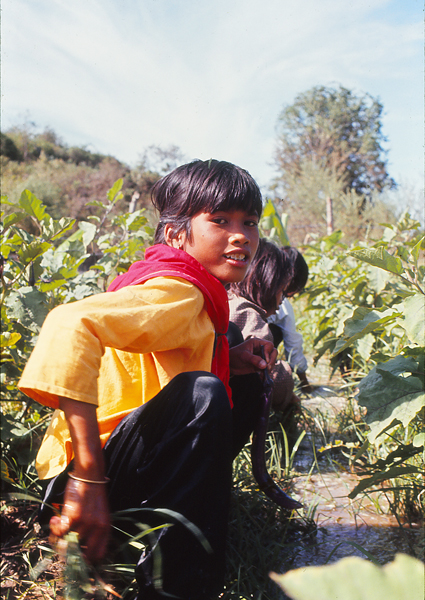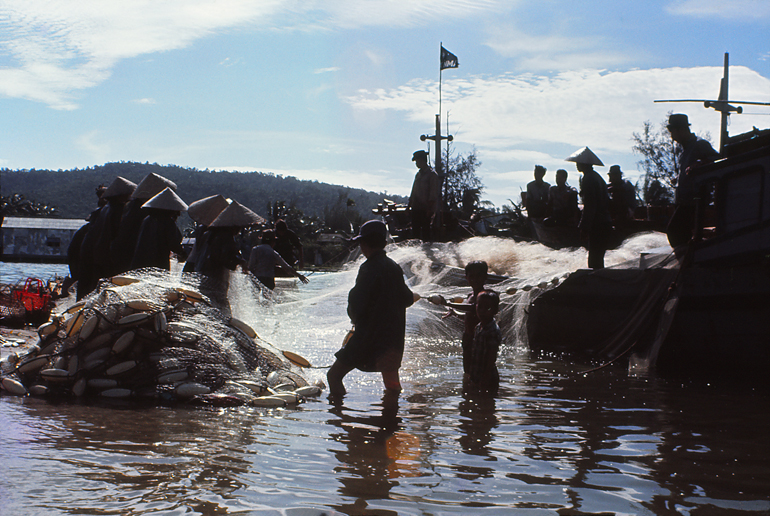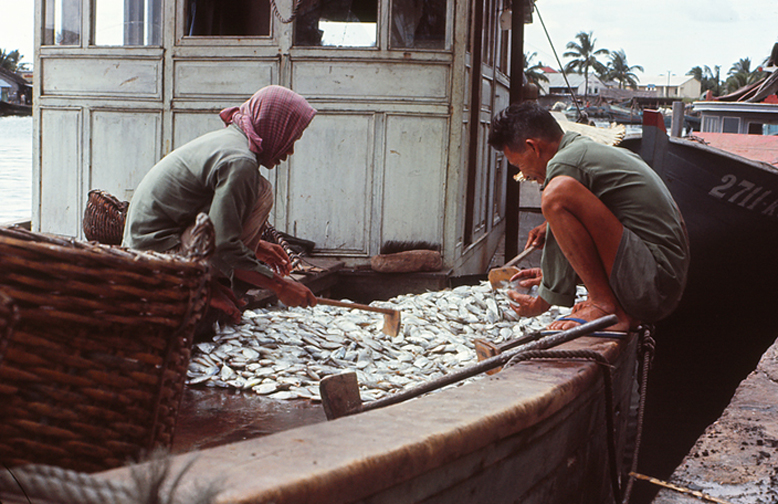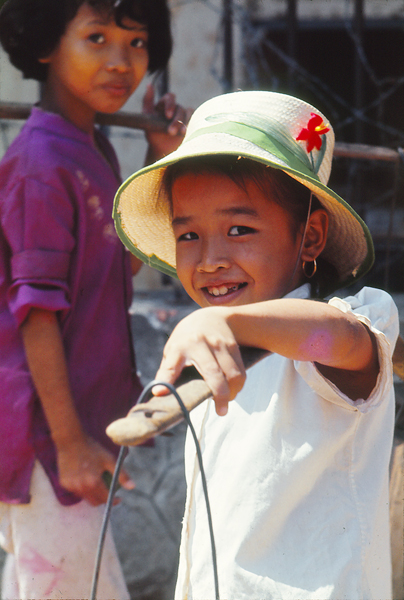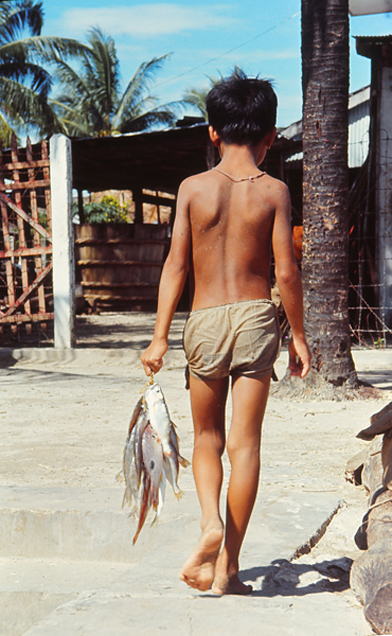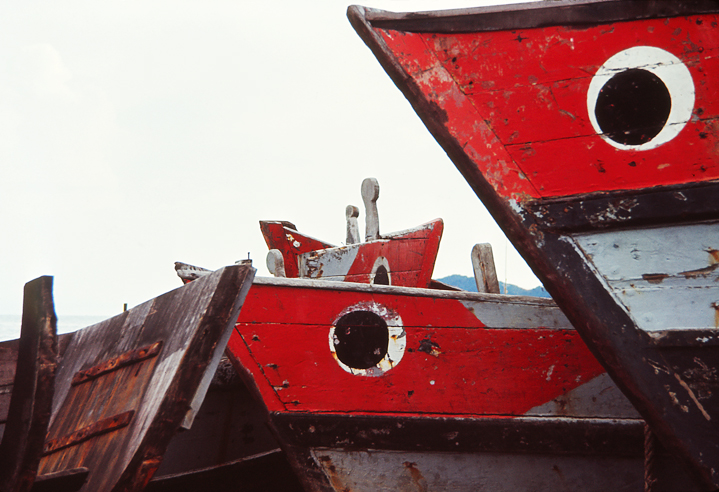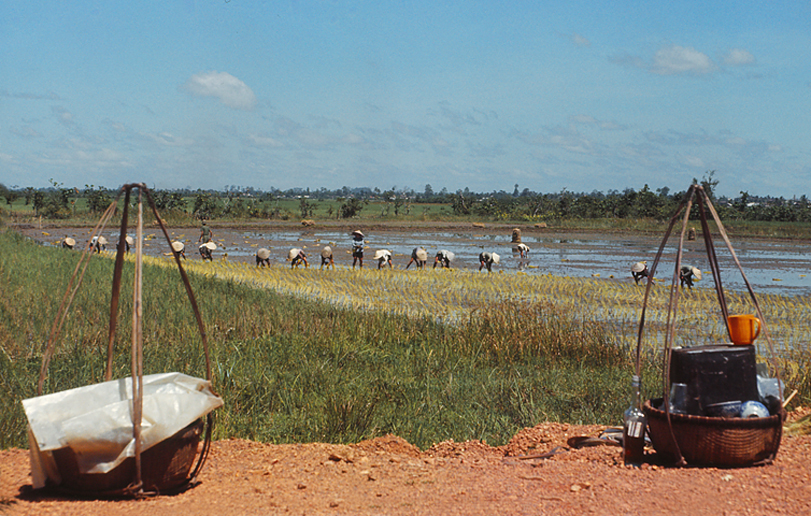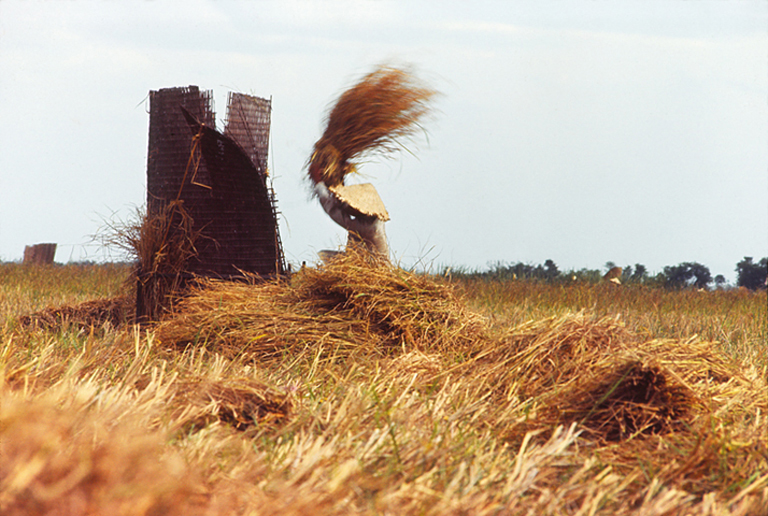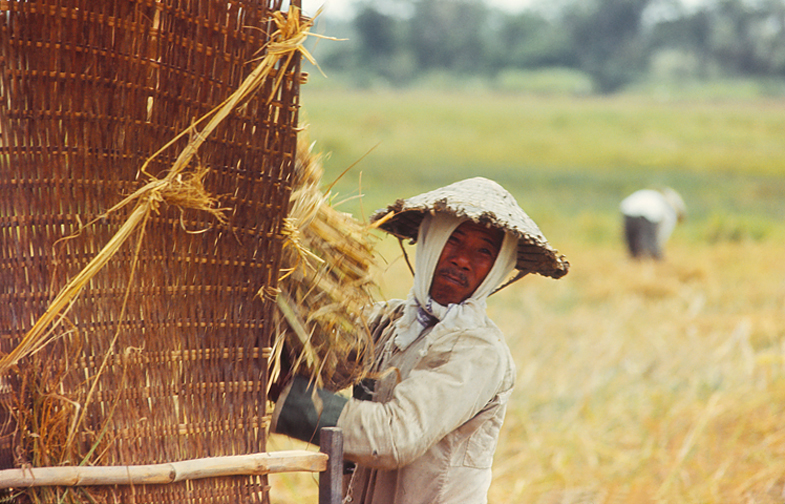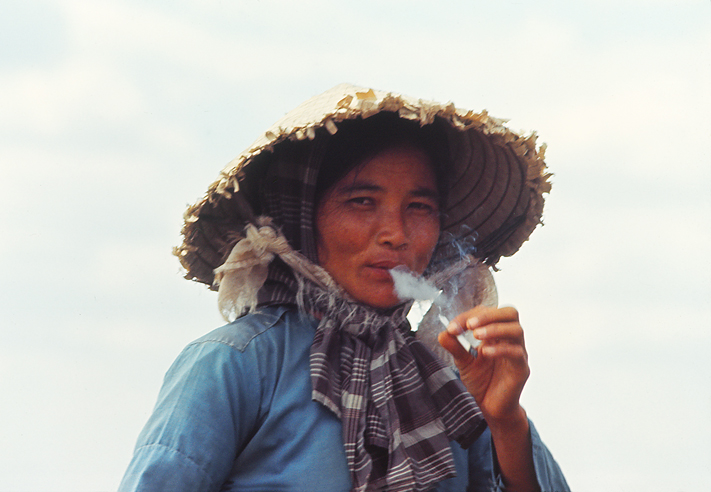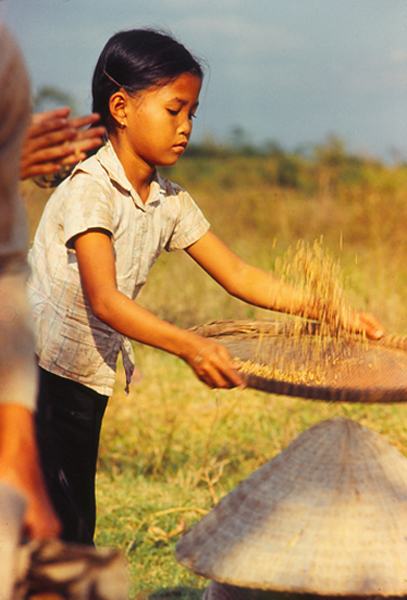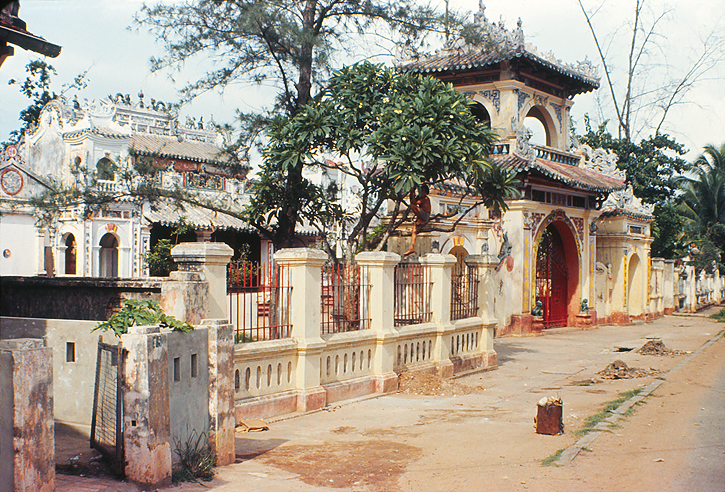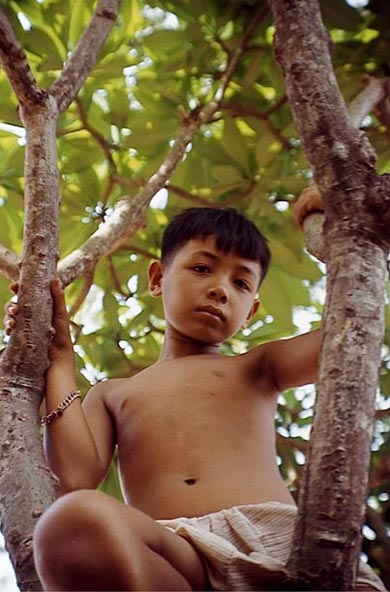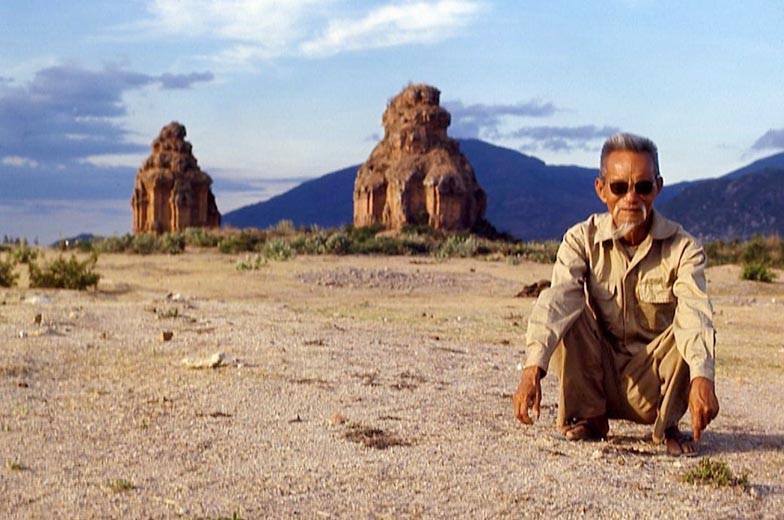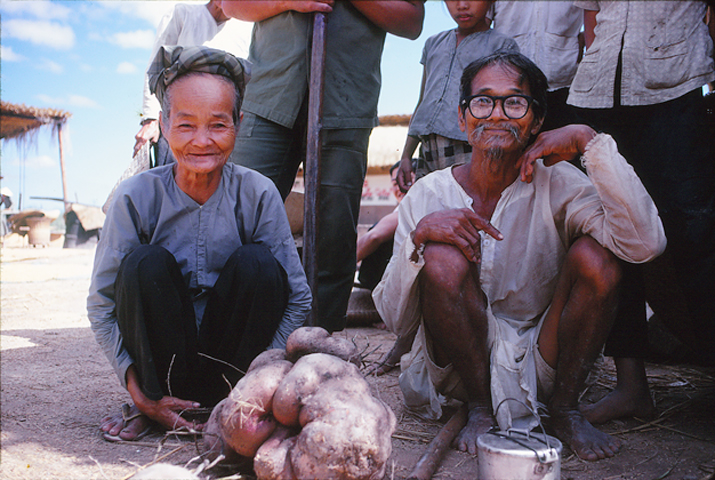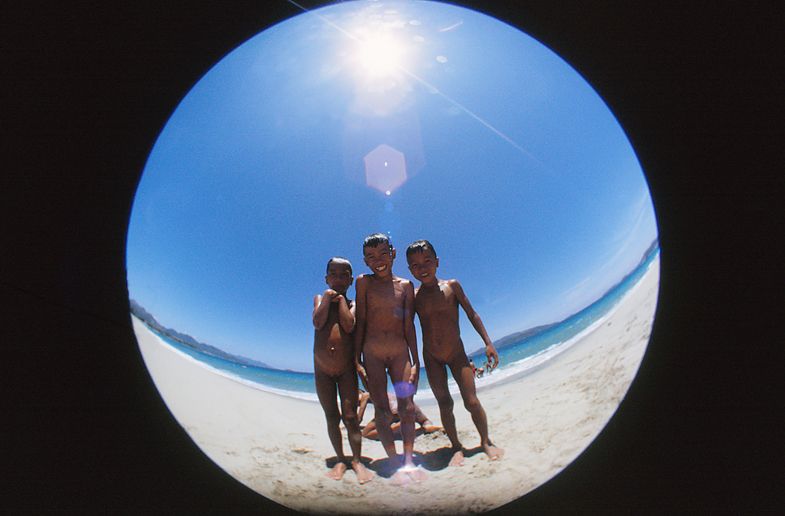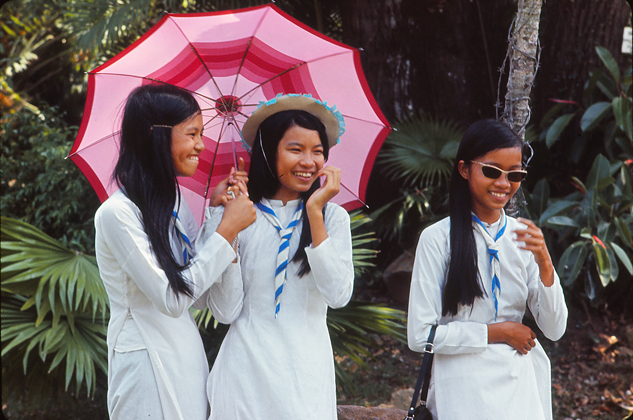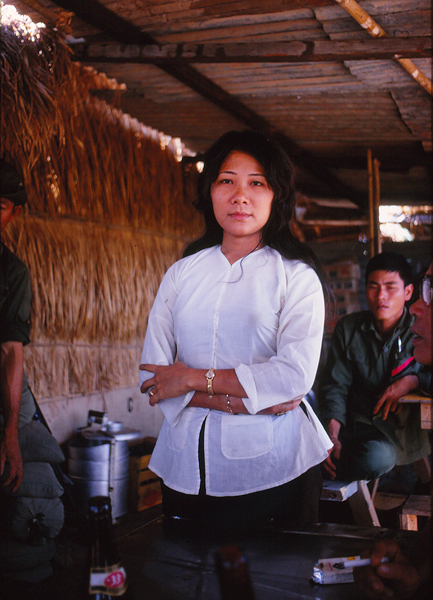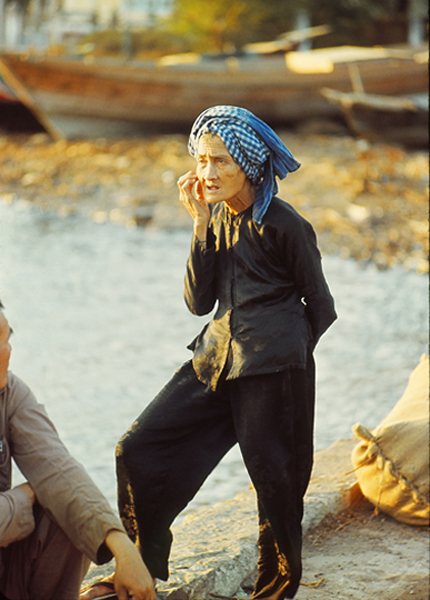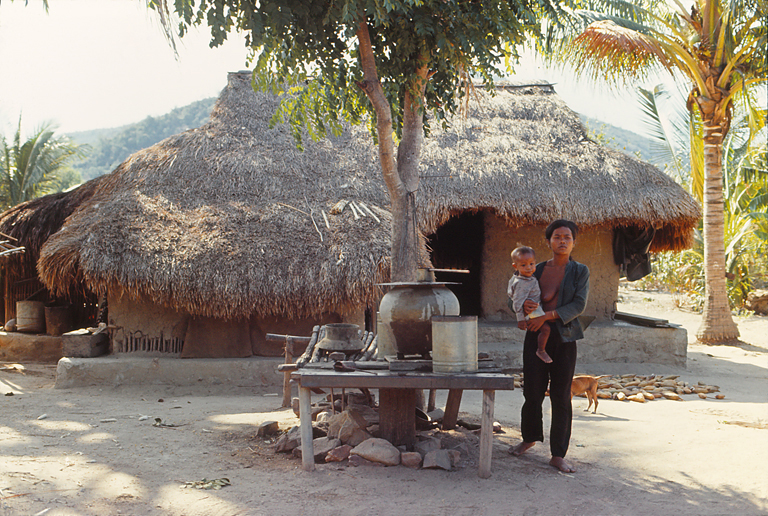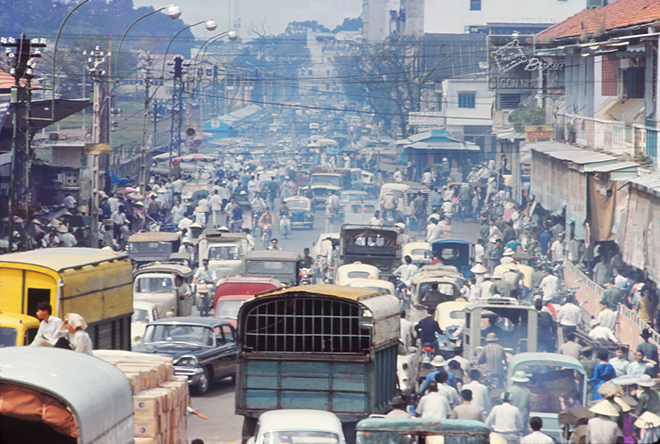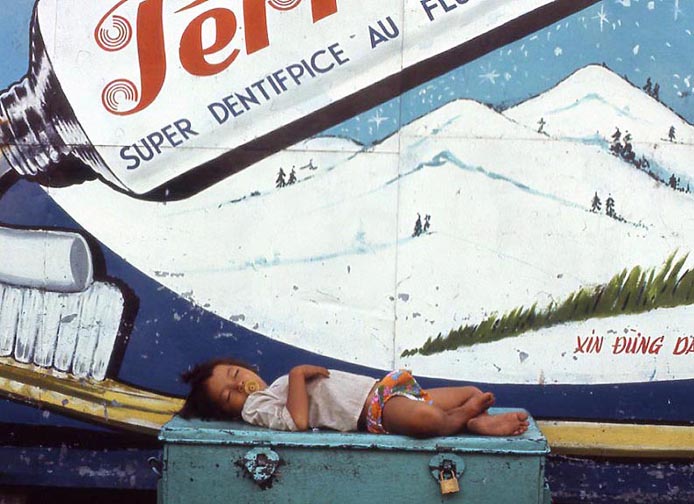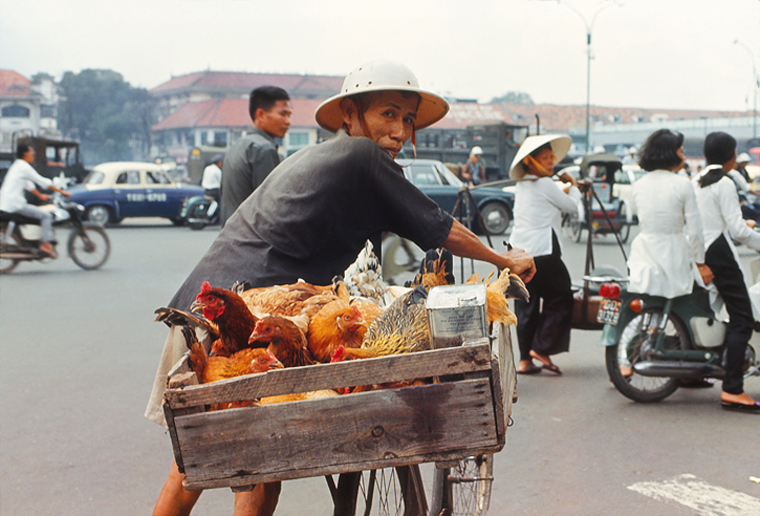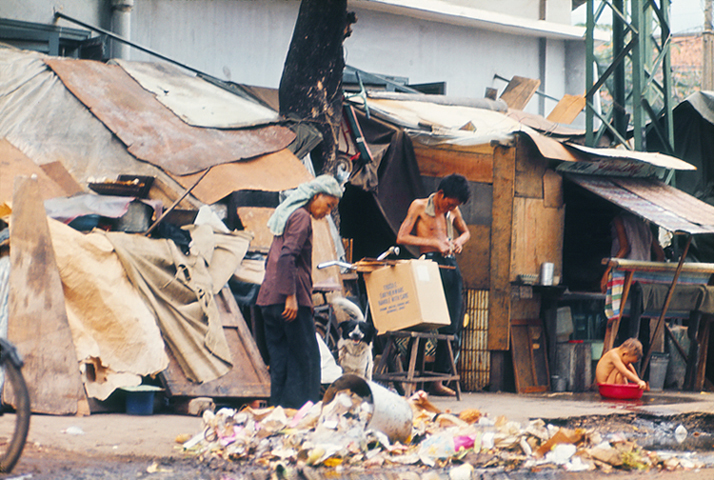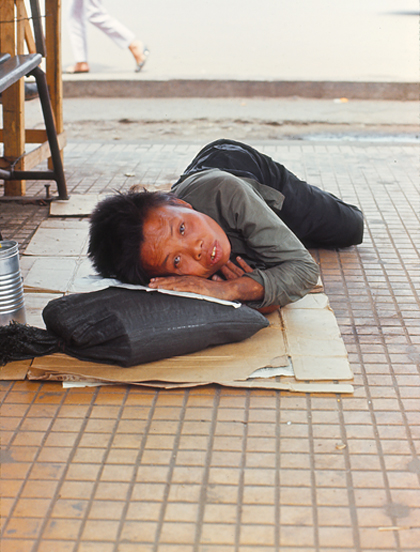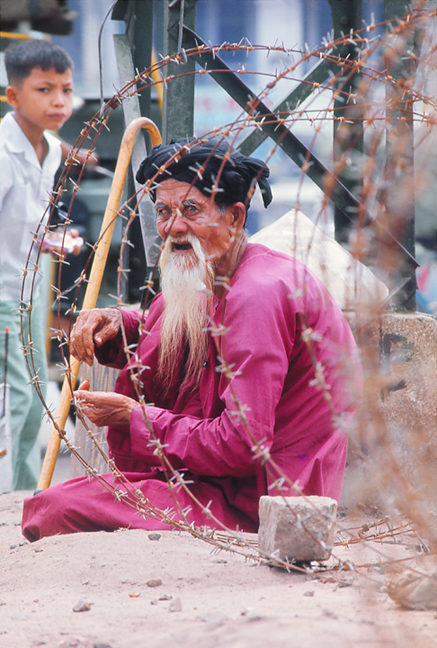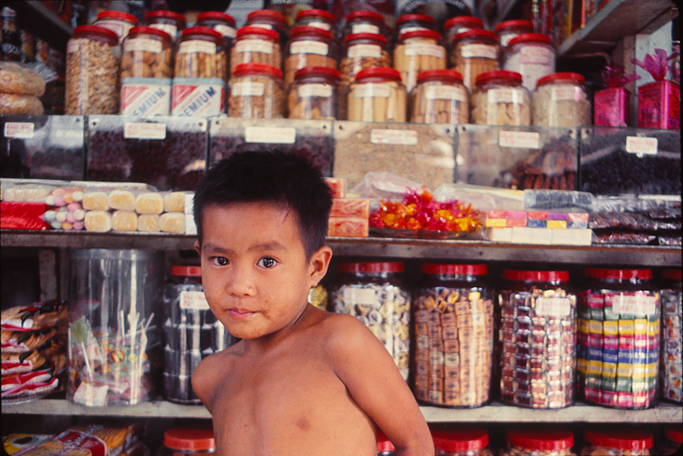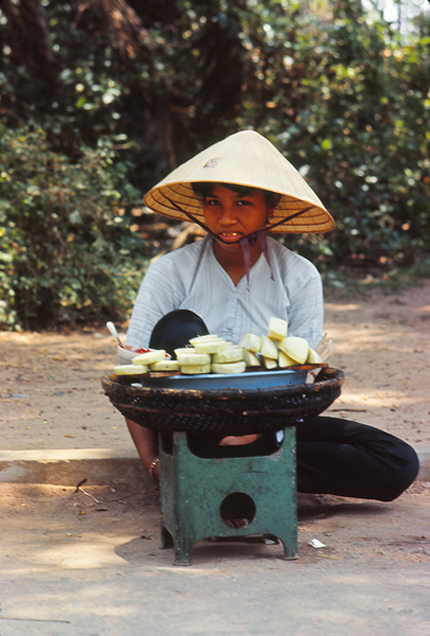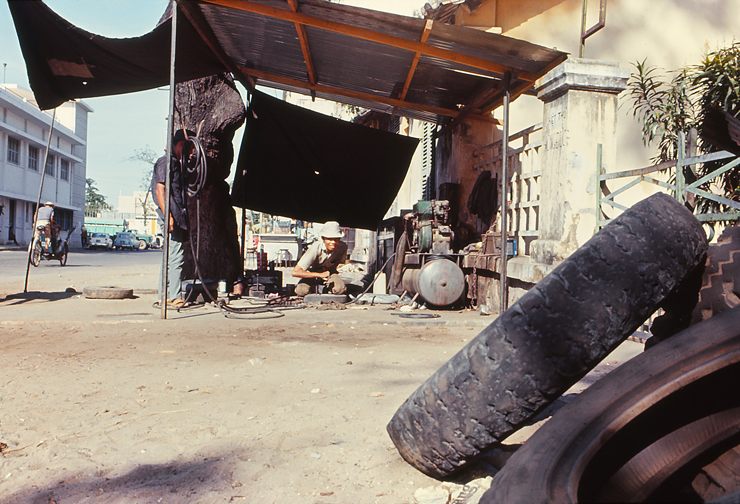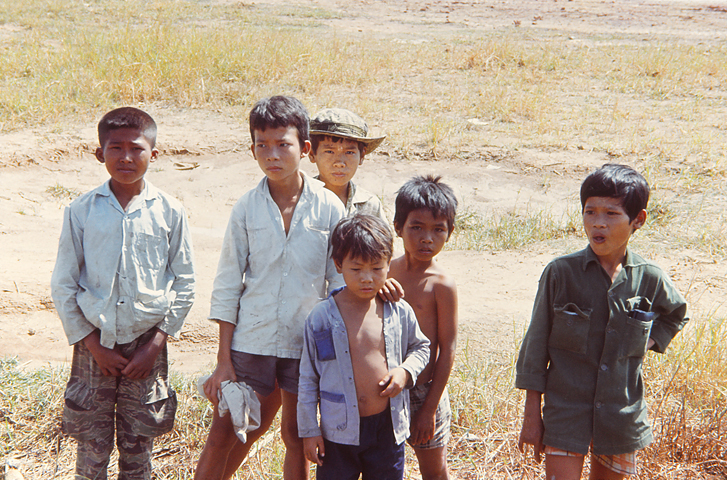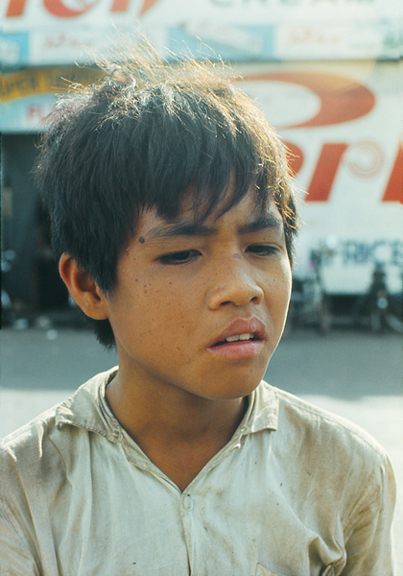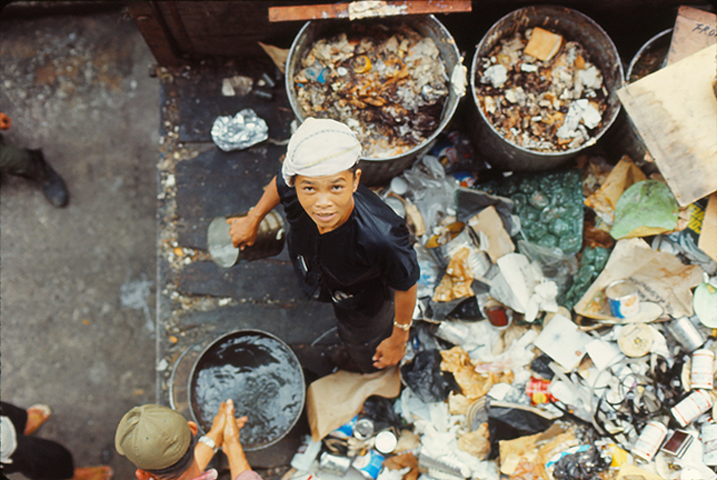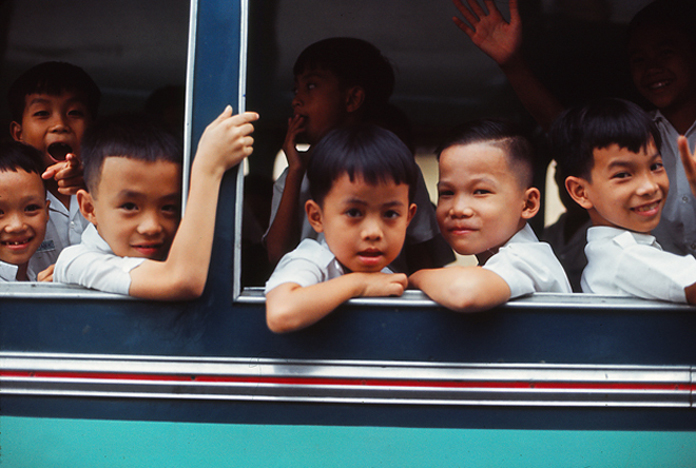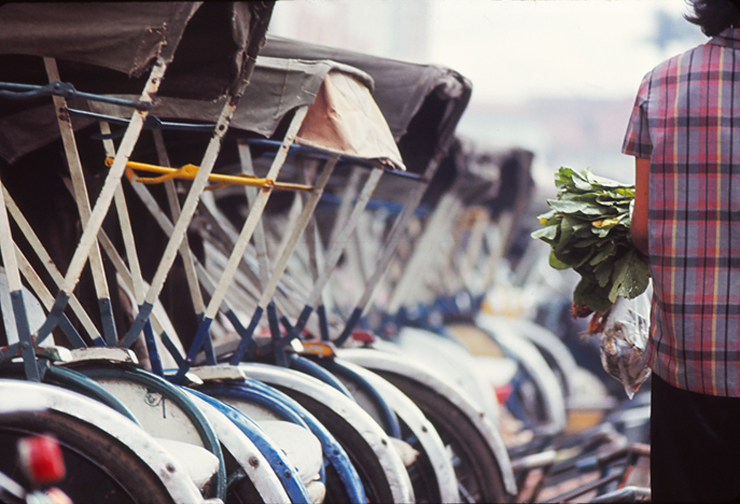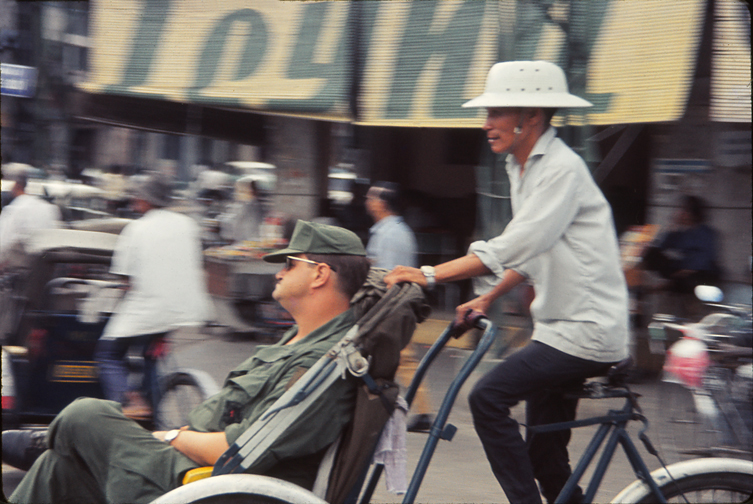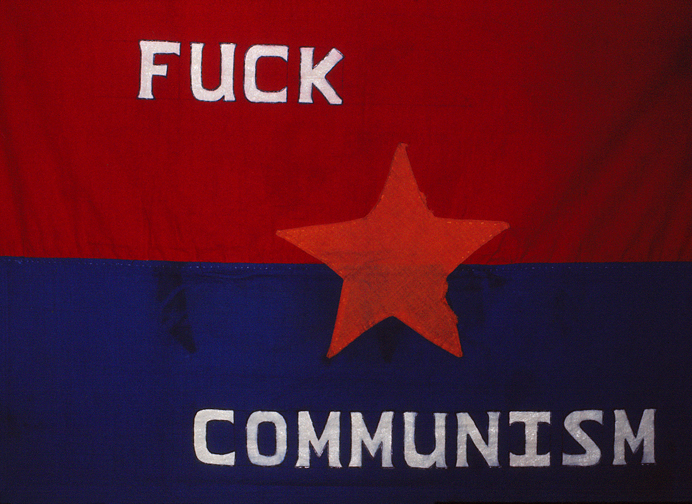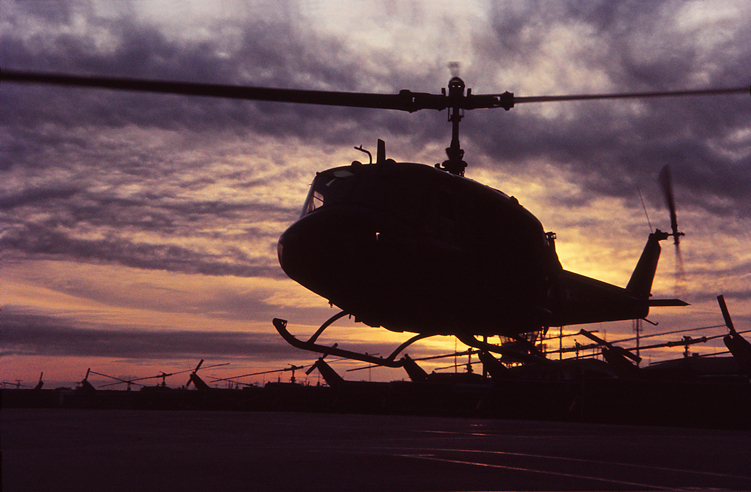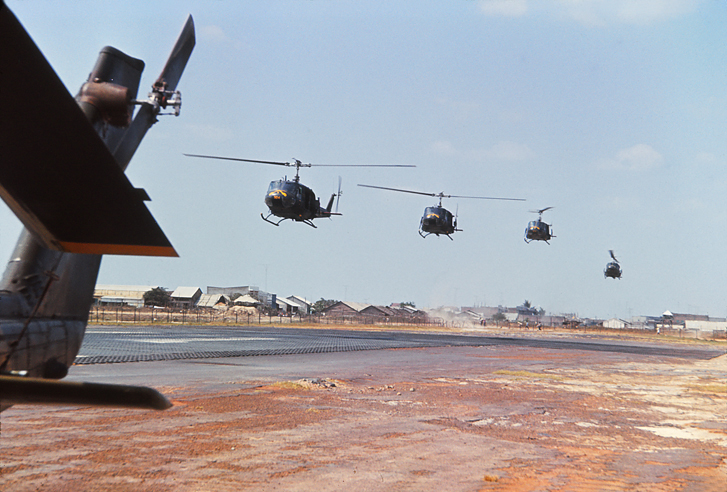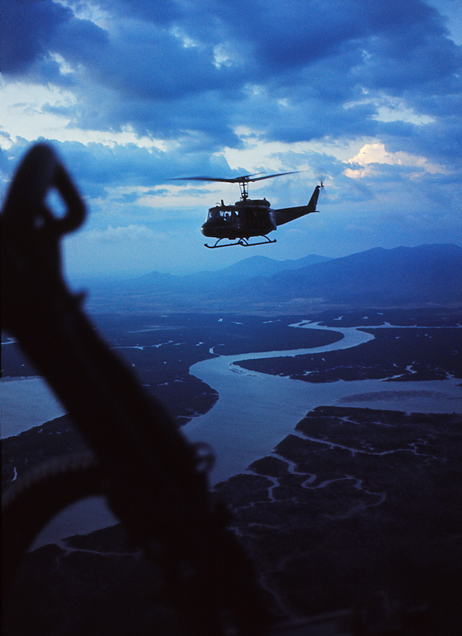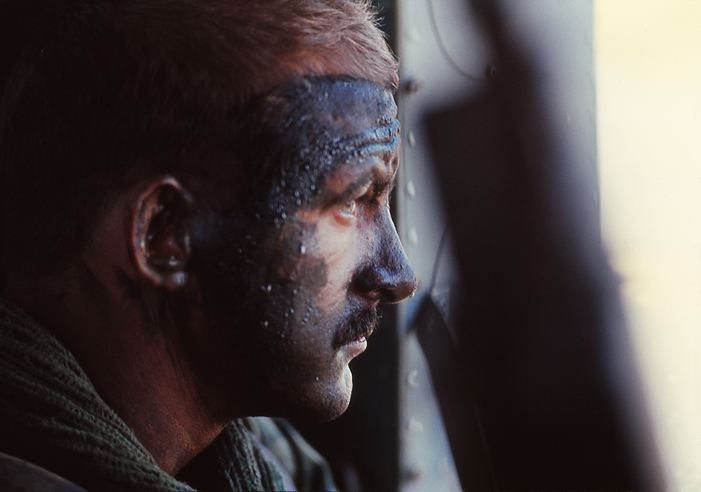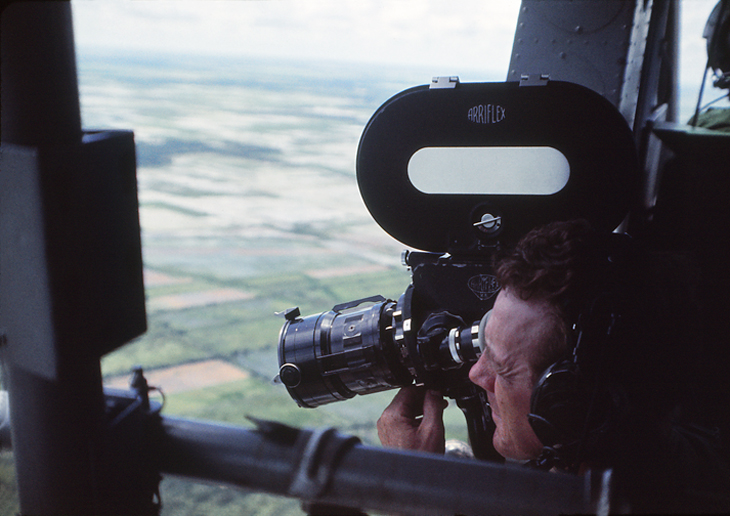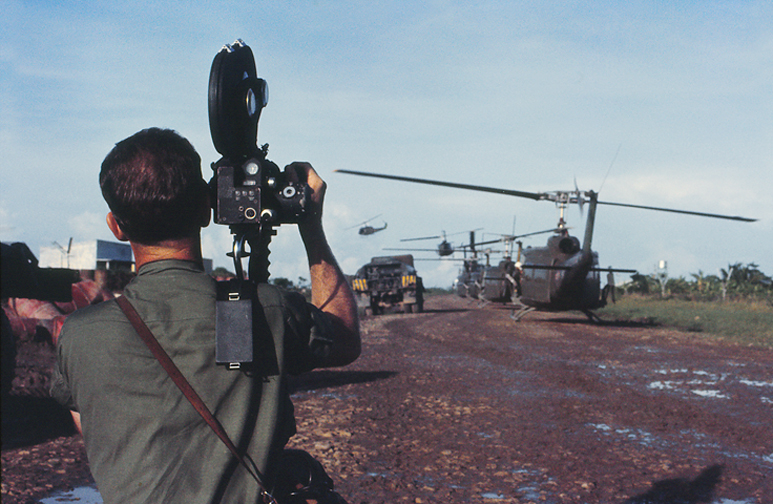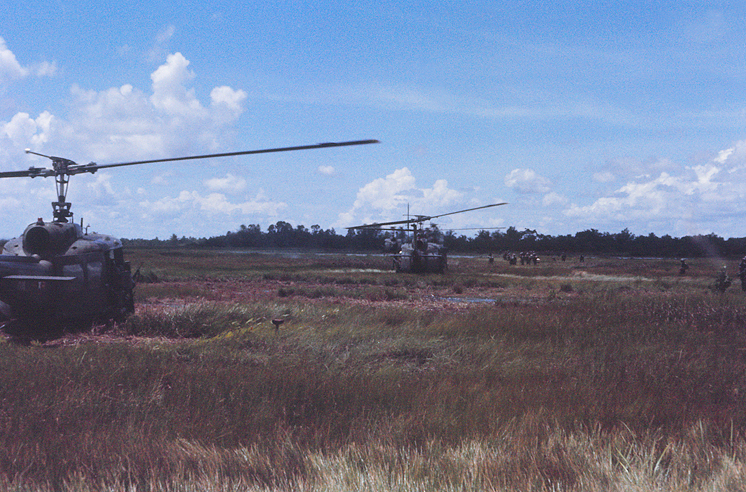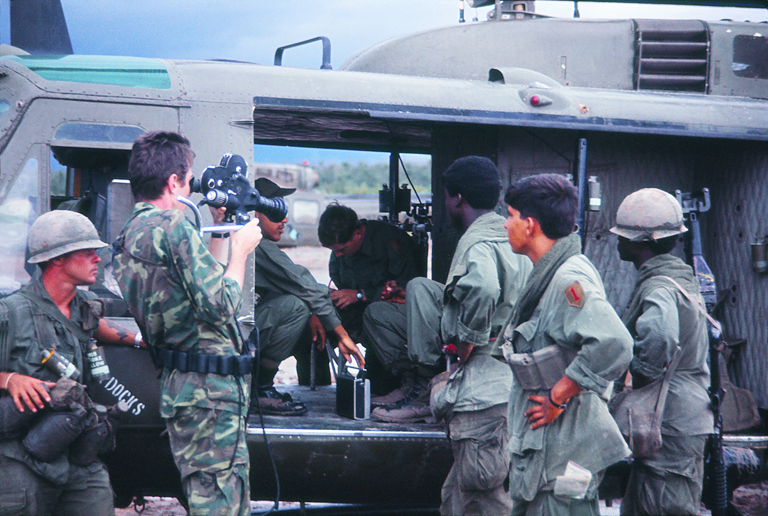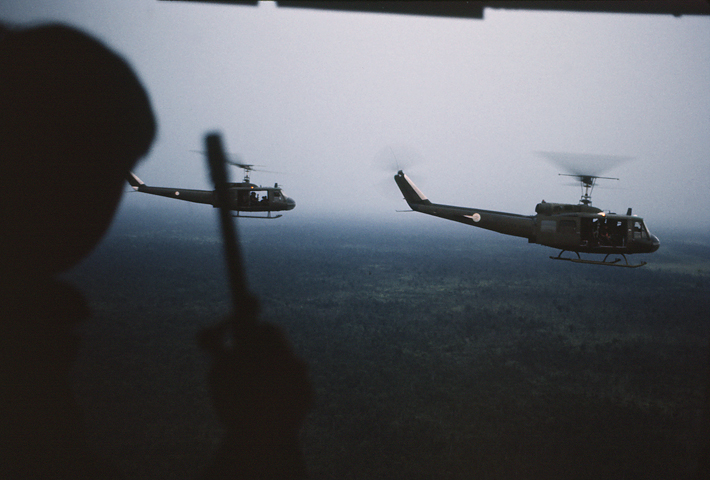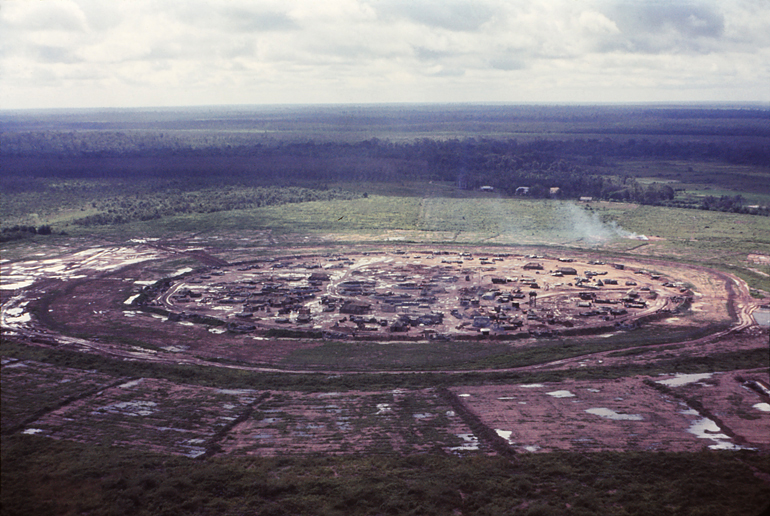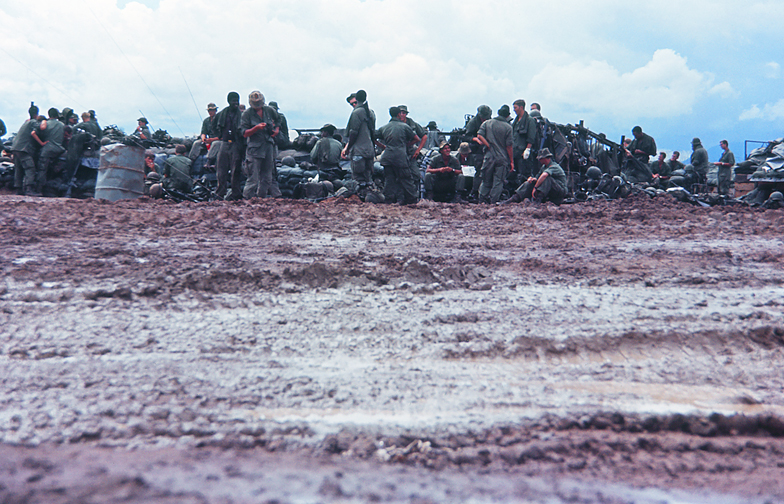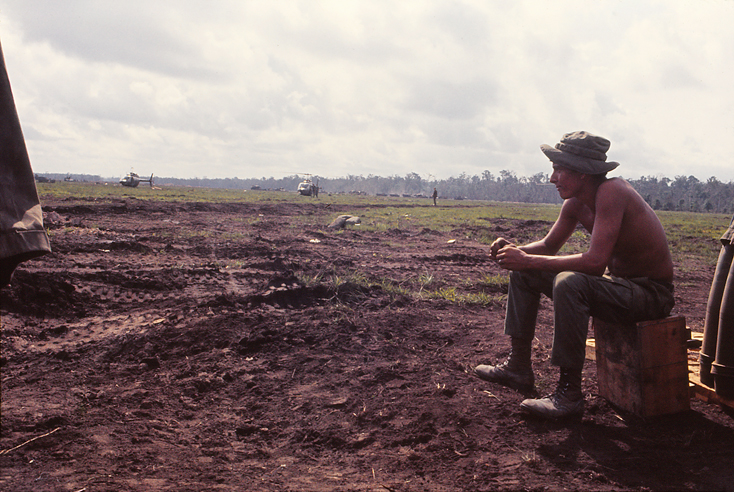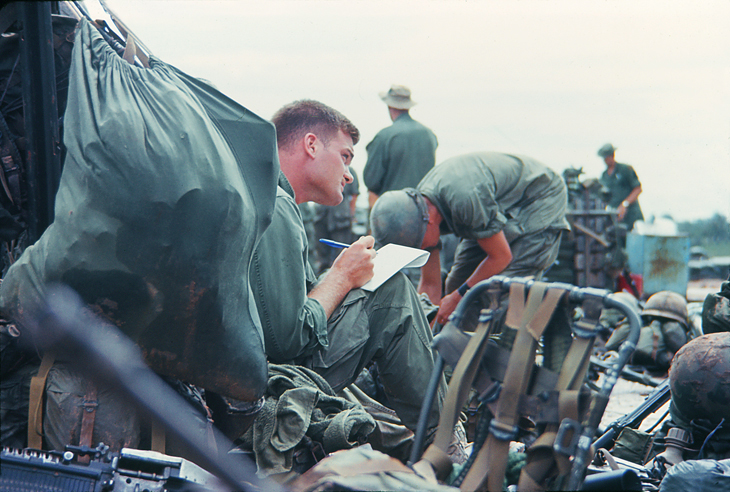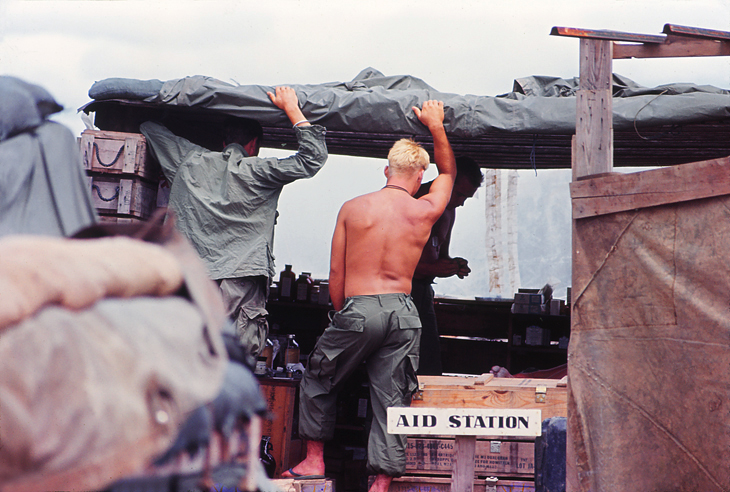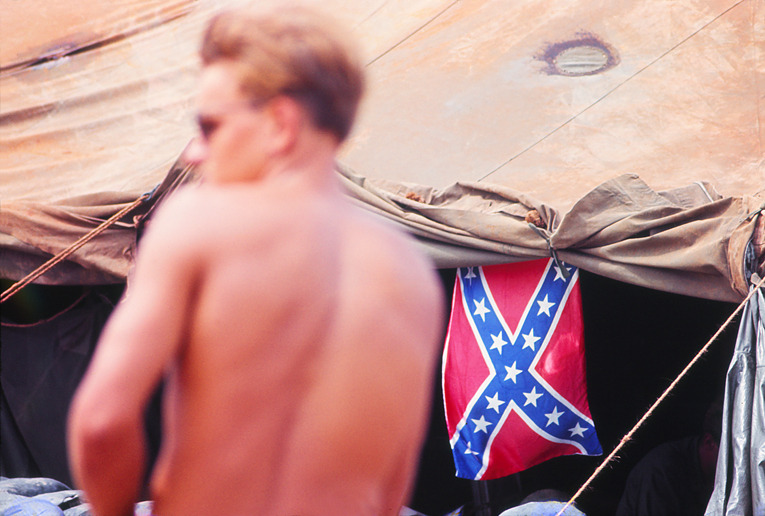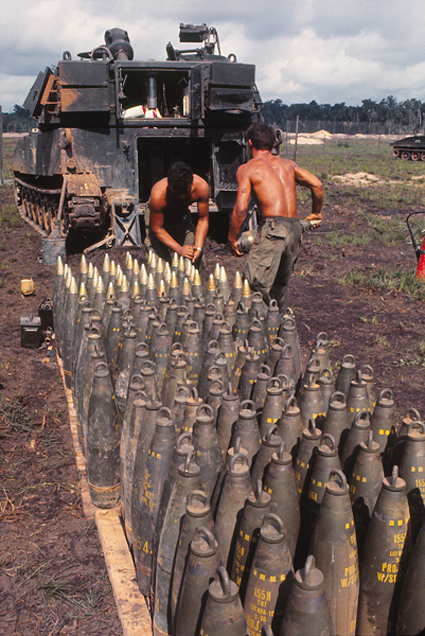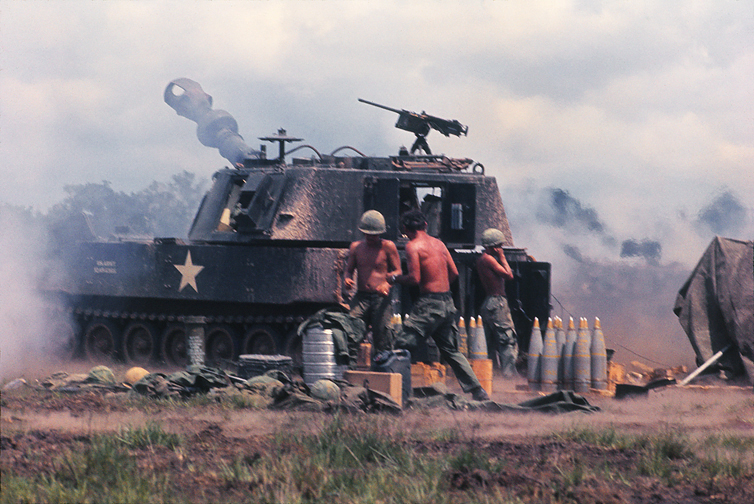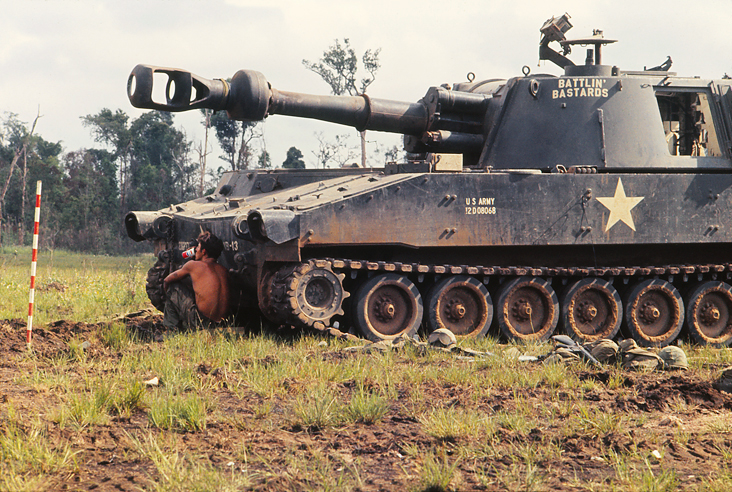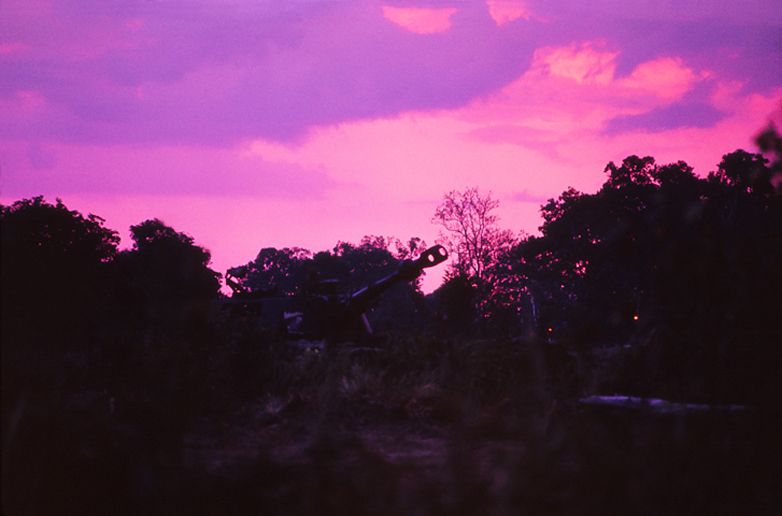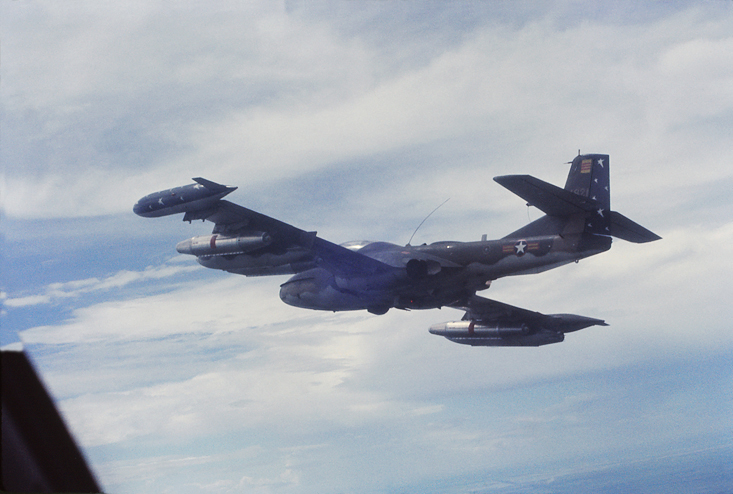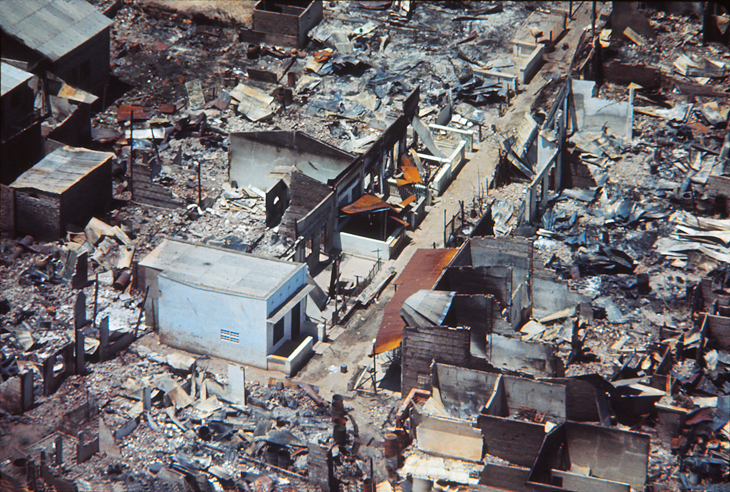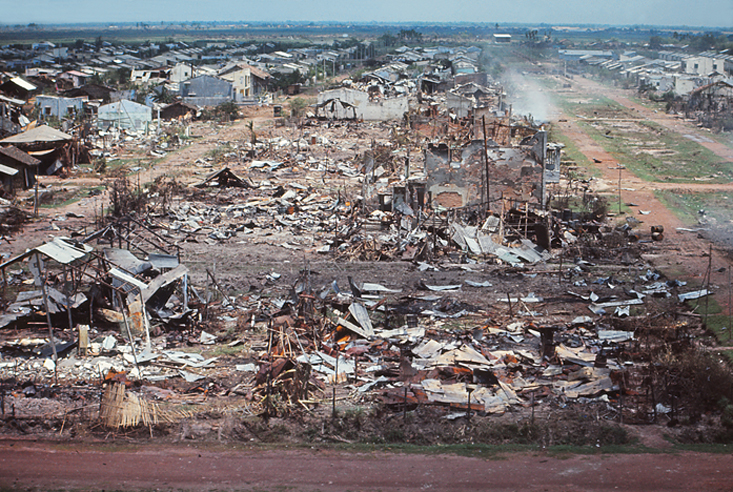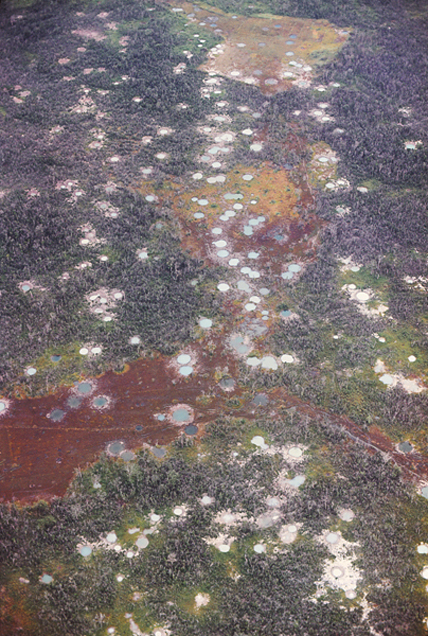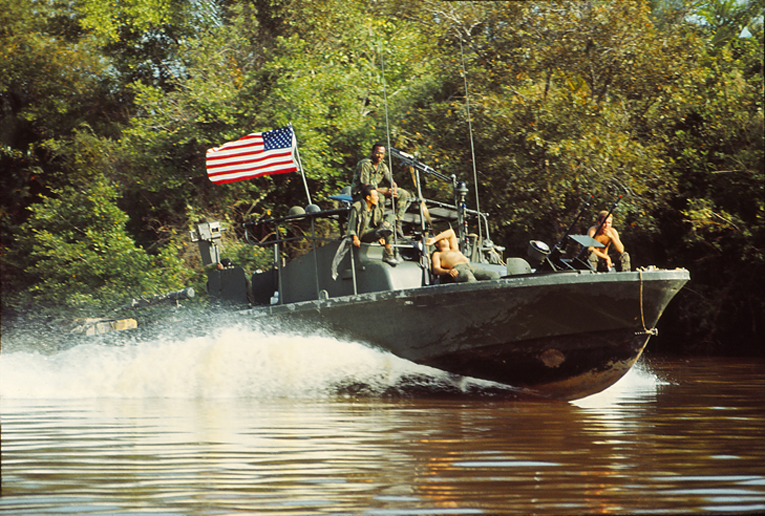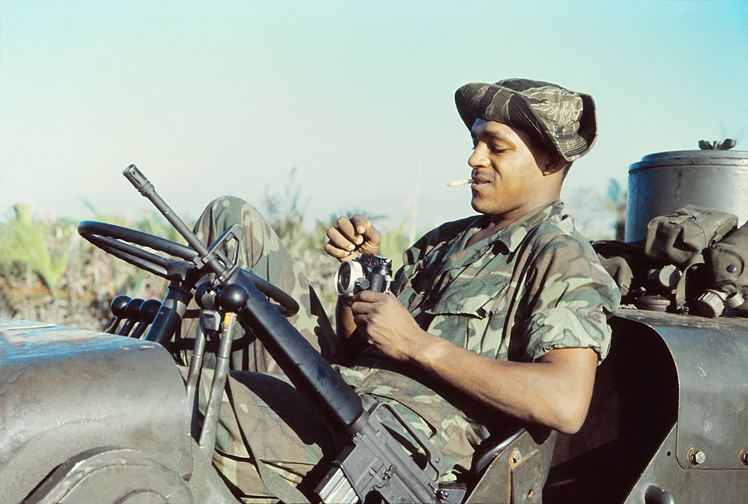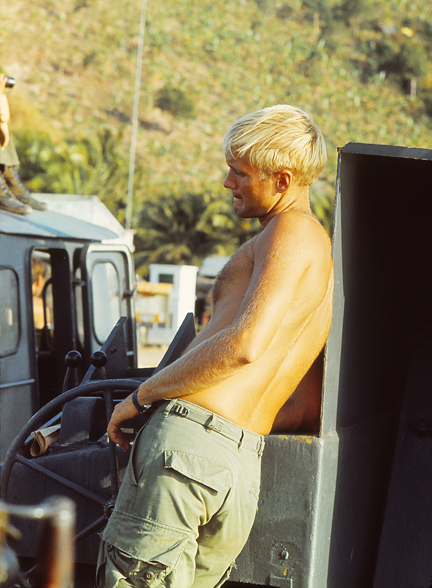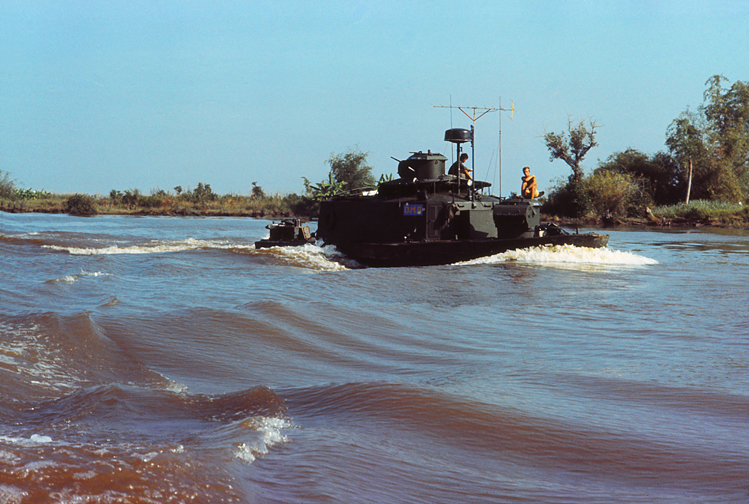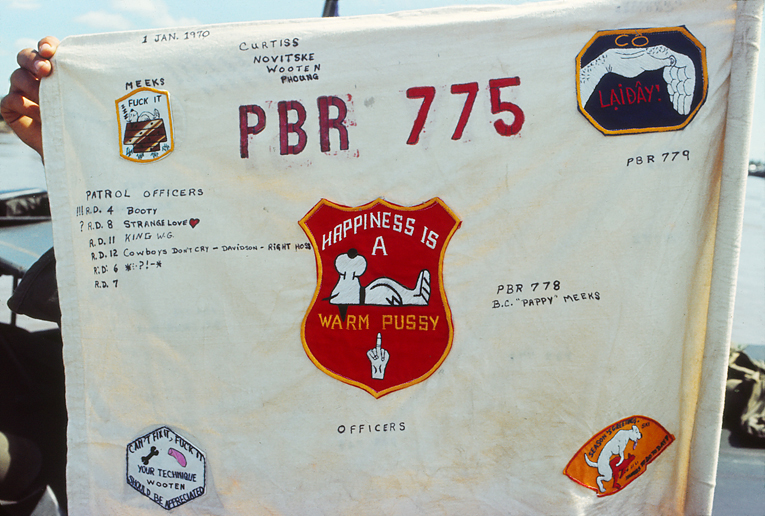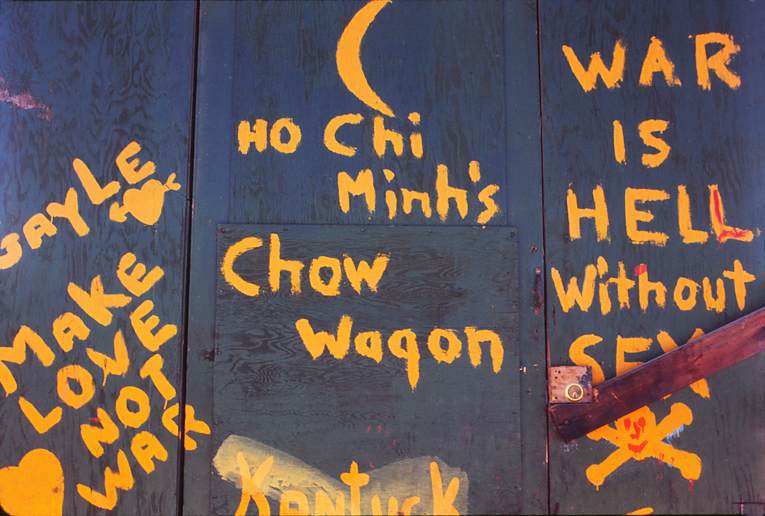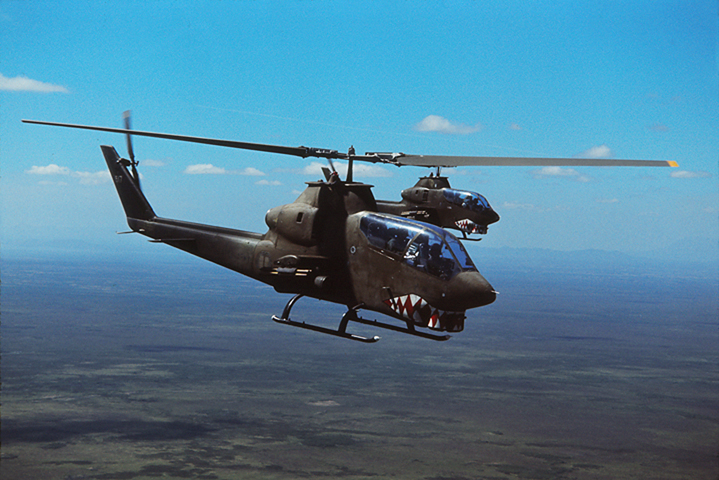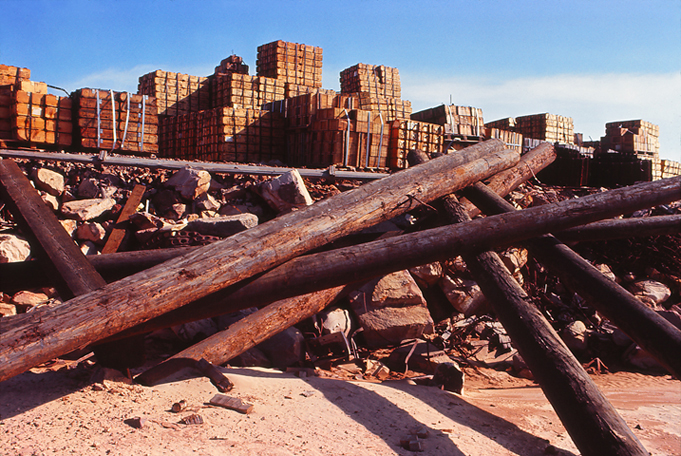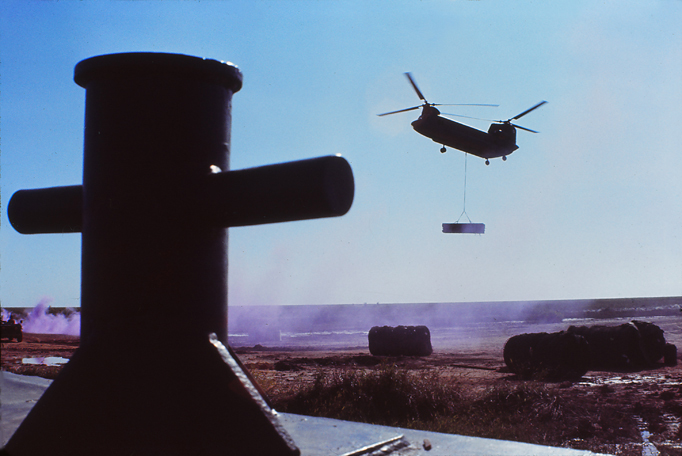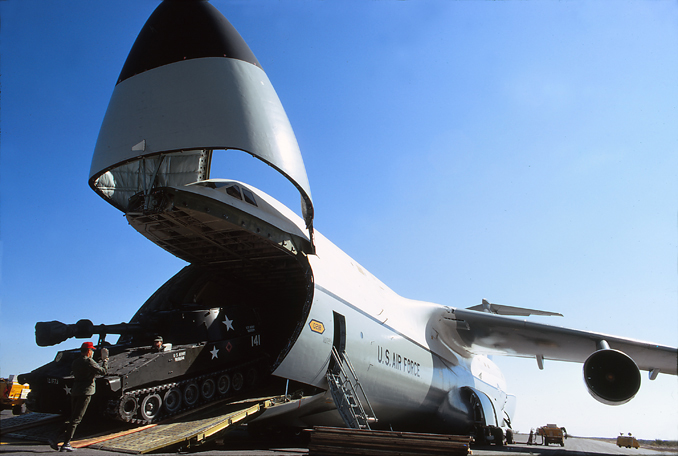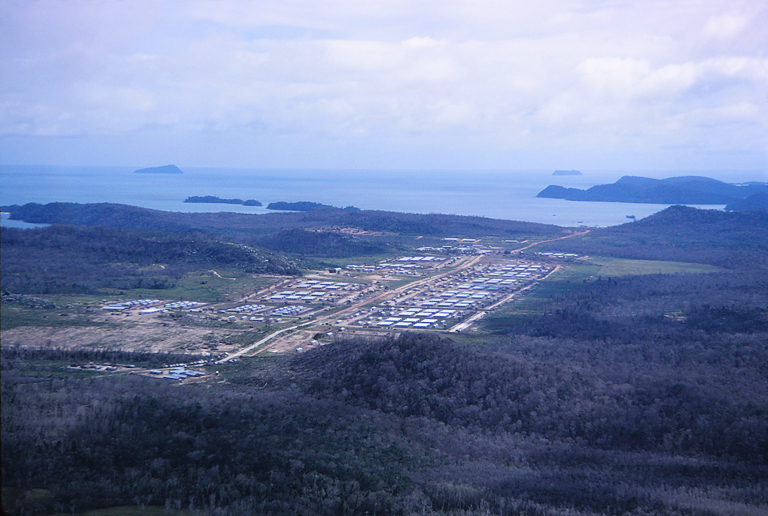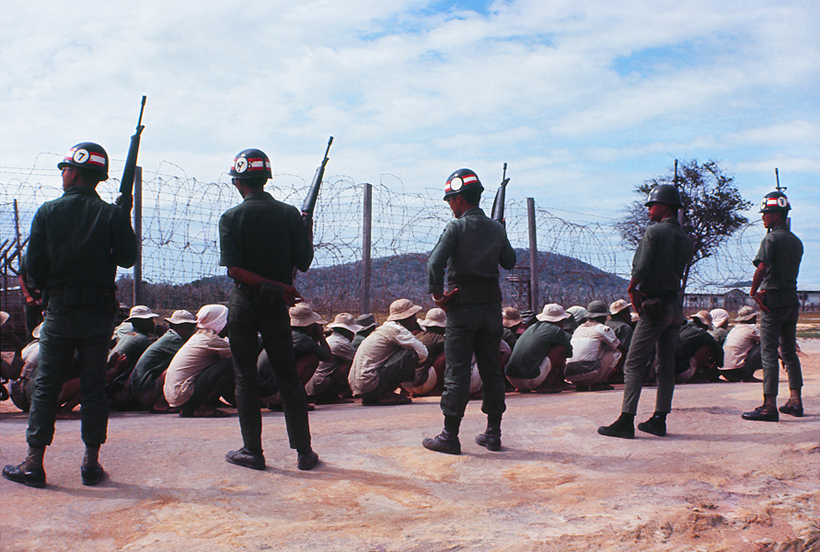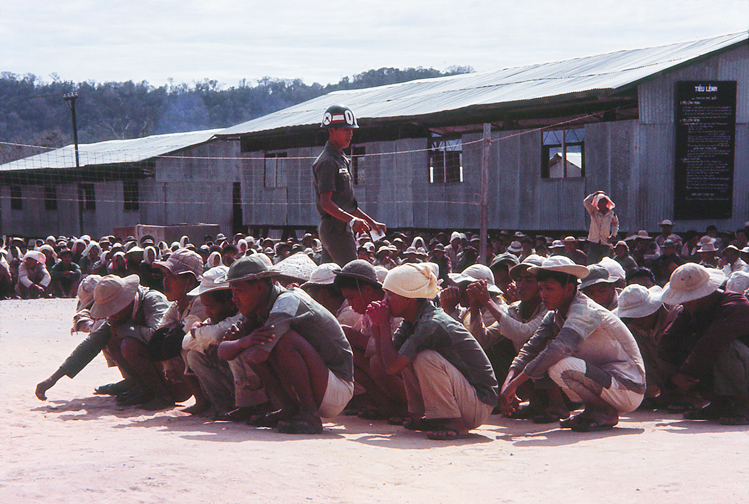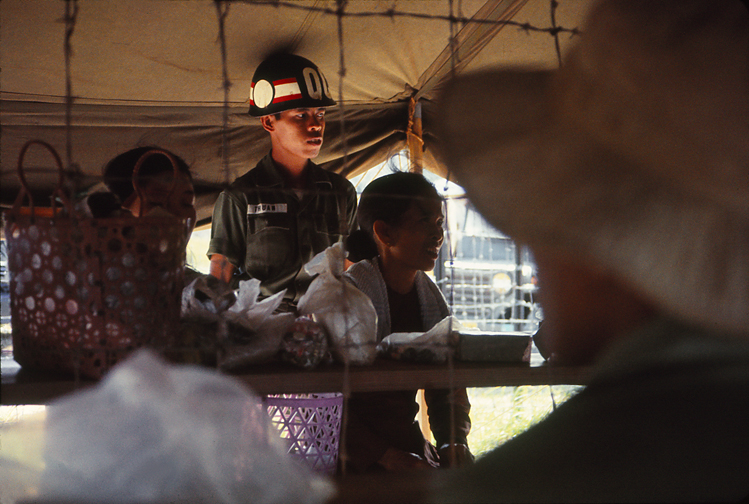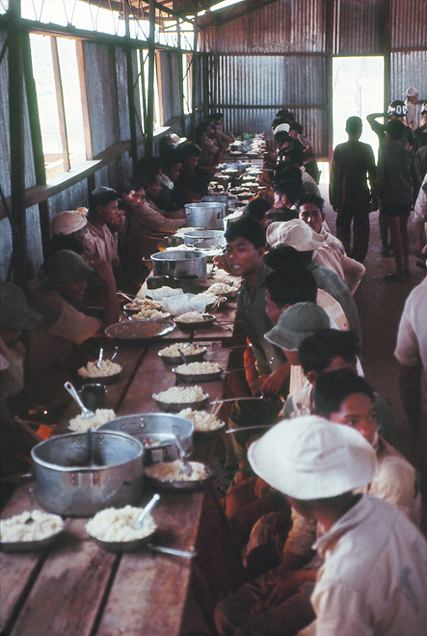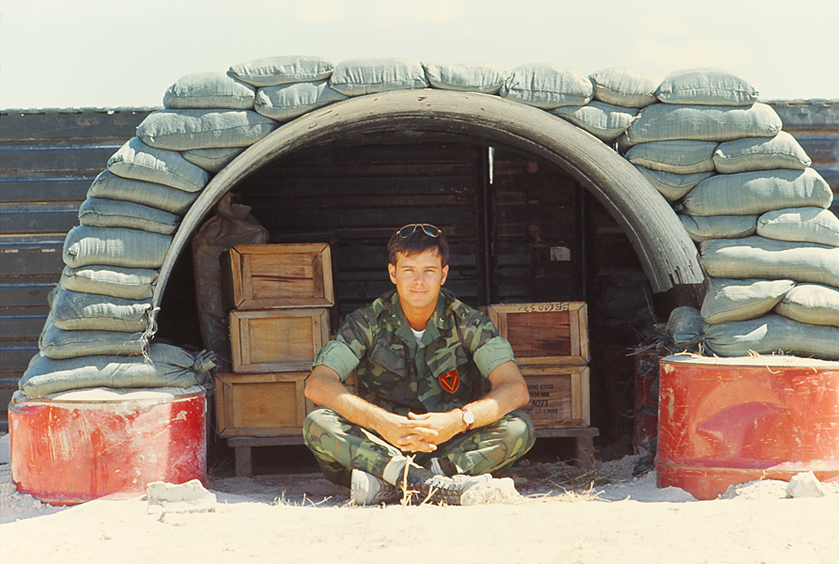Lookout Mountain Air Force Station, Hollywood, CA, 1969. At the completion of a one-year film-making assignment, my options: (1) duty as one of two officers at the bottom of a missile silo in North Dakota, within reach of the Red Phone, where I and another armed officer would await the President’s call to let ‘er rip, a la Dr. Strangelove. Or, (2) a year in Vietnam, job assignment to be determined upon arrival. Duh, no contest for this adventurer! Once in Saigon I wangled the plum position of Commander of the Air Force “Combat Motion Picture Team,” one of five military film teams charged with telling the story of our war effort the way the brass saw it. This jostled my love beads, but a gig was a gig. My commander, knowing that I was capable of cranking out the required four stories a month, allowed me to work without any supervision or guidance. What's a covert anti-war Lieutenant to do? Easy solution: I staged my “combat” stories (a couple were ultimately featured in CBS’s 1971 documentary The Selling of the Pentagon), in an effort to keep myself and my cameramen as much out of harm’s way as possible. I figured the more "combat" I could put in front of the public, the sicker they’d get of the whole thing. The brass ate it up, and published most of the stories I cooked up, wrote up, and filmed. These were sent out to TV stations all over the United States, for free, to be used as "news clips." Fake news, as it turned out... As I toured my movie team around The Nam I was struck by the gentle sweetness of the people, the beauty of their land, their tenacity and perseverance in the face of… well, among other things, US! Everywhere I went I lugged my two aluminum camera cases chocked full of Nikon equipment and…well, beyond that, the pictures tell my story. Part One: THEM. Part Two: US. ( Nearly all these images represent their full selves scanned to digital – without cropping -- from my original Ektachome or Kodachrome 35mm slides.)
PART ONE: THEM
A Mekong Delta river slowly meanders along, an hour after a gauzy daybreak, one day in 1969...
|
On Phu Quoc Island, not far away in the Gulf of Siam, women and children weave and repair fishnet.
|
In the countryside of the mainland, young girls participate in a coming-of-age ritual.
|
Life revolves around one of many waterways.
|
In 1969, all hands take part in workaday South Vietnam.
Every moment has its practical aspect,
|
but the smiles keep coming.
|
Only three and four year olds get work passes.
|
Most villages have no electricity, things are done as they have always been done...
|
sometimes with great artistry.
|
Every day has its work cut out, whether planting and harvesting,
|
emptying the nets,
|
sorting the catch,
|
rounding up the eels,
carrying the water,
walking dinner home.
|
In 1969 the fishing industry on Phu Quoc Island generated the highest per capita income in all of Vietnam. No wonder: even in their retirement, eyes guide these boats through, or away from, evil spirits.
|
The shape of the eye announces where the boat comes from, a bit like a license plate.
|
Largely untouched by the war, life in 1969 on Phu Quoc Island is (mostly) idyllic.
|
On the mainland, rice dominates agriculture.
|
Tradition dictates farming methods...
|
Hard work...
|
... deserves the occasional break.
|
Everyone pitches in.
|
With their men either conscripted, "missing," or dead, the work falls to the women and children.
|
Everybody works...
|
Everybody. Hey! You in the tree!
|
Who, me?
|
Pride of history and culture...
|
Pride of work and its bounty.
|
Goofing on Da Nang's China Beach...
|
Thousands of teenage girls migrated from their rural villages to the bars and brothels where they could earn survival money from G.I.s.
|
Some, like these schoolgirls in their traditional ao dai dresses, escaped the shackles their sisters endured.
|
A woman of position and bearing.
An elder alongside her river village.
|
Outside a clinic, a mother anxiously awaits help for her sick child.
|
A Montagnard mother holds her boy.
|
In Saigon, it's a day like any other...
|
everyone going about their business...
or not.
|
Daily, thousands of vendors of livestock, fruits and vegetables bring their goods into Saigon however they can. In 1969 there is little refrigeration, but very fresh food...
|
...for those fortunate enough to afford it.
|
Others suffer...
...and go without...
...or depend upon the charity of others.
|
A scant two blocks away -- the central market, resplendent with fresh fruits, vegetables, meats,
|
and sweets.
|
The entrepreneurial spirit: alive even in these worst of times.
The rare young man in his sidewalk tire repair shop.
|
Around Saigon: precious few young men, but lots of children, many living on the edge, often left to themselves, even at very young ages.
|
"Same-same" in the countryside.
Feeling the pain and ........................................... for a moment, blasting through it.
|
A "rose among the thorns." No room for self-pity here...
|
Lucky boys, on their way to school.
|
Pedicabs await their next fare.
It could be anyone.
PART TWO: US
Pardon the abrupt transition! This carefully stitched flag, a mockery of the North Vietnamese standard, presented itself somewhere "out there in combat-land," on a firebase perhaps.
A bevy of Huey choppers awaits the day's action. Seven thousand such helicopters were ultimately deployed in The Nam and performed a multitude of tasks; slightly more than half survived the experience. In many respects these vehicles formed the backbone of the military efforts in Vietnam, Laos, and Cambodia (the latter two comprised the so-called "Secret War").
Harking back to the sequence in Coppola's Apocalypse Now where, to the bombastic strains of Wagner's Ride of the Valkyries, a gaggle of Hueys, ferrying soldiers armed to the teeth (with at least one surfboard for aprés attaque), rain lead on a seaside village of hapless VC. This particular morning in 1969 witnessed my own directorial version of that now-legendary dustup, which -- who knows? -- might have inspired Coppola's later version. One can fantasize, no? At any rate: here, in a blaze of dawn light, the first Huey rises off the tarmack.
Massing to move out, seven Hueys line up to ingest their breakfast of Army grunts.
Up music!
At 1500 feet of altitude, cool morning air gives respite from the humidity and heat below. It's another world, and a too-brief, welcome one.
Decked out in war paint, a soldier entertains his own thoughts before the "exercise" begins...
A buddy contemplates his own destiny...
Both under a watchful eye...
or two. And just how is a bunch of skinny little guys in black pajamas going to hold up under this firepower?!
Ah, but who, and what, is this? Looks like a cameraman! Seems we have to back up a bit...
Here we are back at lift-off, this time highlighting a member of my "Combat Motion Picture Team," the cameraman who skillfully captured, perhaps even enhanced, the day's activities. Which is to say that, yes, this was a "staged event," orchestrated by Yours Truly to maximize coverage and minimize hazard. My answer to Lee Michaels's stridently crooned question: "What would you do if they called on You?" (The War, 1969)
The choppers descend onto the target field, disgorge their troop payload, and the whole mad affair goes off without a hitch -- or a bullet fired.
Another of my cameramen rounds out the story with some close-ups in the field. "CUT! It's a wrap!"
Film in can, sound on tape -- it's off to wherever we started from, then back to Saigon and my quiet office in a downtown hotel -- to hatch my next captivating war story...
My least favorite locations were "fire bases" -- areas carved out of nowhere by the Army (strategically, one presumes), then populated by said Army, and used for staging, creating a presence, whatever. They were heavily ringed with barbed wire and sometimes in the middle of the night, a "mad minute" would erupt -- a period of a minute or three when machine guns, mortars, and most every weapon present would be fired spontaneously and indiscriminantly into the darkness, purportedly to discourage "sappers," grease or oil-slicked VC who might attempt, in the darkness, to snake their way through the barbed wire -- essentially on a suicide mission -- to kill as many G.I.s as possible before being killed themselves. It's clear from the photos that these Army grunts lived in Mud City -- a place of relentless heat, humidity and, especially during monsoon season, rain and more rain.
Any port in a storm...
Brothers on the move. These guys brought a kind of humor, musicality of being, and a whole lot else that white guys somehow didn't have.
A quiet moment.
A letter home.
Tending to wounds or ailments. Check your feelings at the door, please.
It's hard to comprehend how this overtly racist symbol could (or, be allowed to) "proudly fly" in a zone where blacks and whites were so closely situated, where their mutual cooperation and support could make the difference between life and death. But, there you have it...
I wasn't doing a story on these guys, the self-called "Battlin' Bastards," but I rounded a berm and voila! The moment seemed ripe for a few snaps, but I paid my price once the firing began -- ouch, my poor ears!! As there wasn't any visible suggestion of a target, the experience took on a detached, surreal vibe, as did so many of the activities in Vietnam.
Real Men don't wear earplugs.
Stinky, too -- all that acrid smoke. Still, how preferable to be on this end, rather than the other... but that was one of the ironies, that these guys operated (at least during daylight hours) with relative impunity, lobbing their shells "out there," to explode many miles away.
A "Battlin' Bastard" takes a Pepsi break. "You've got a lot to live, and Pepsi's got a lot to give." (Pepsi slogan, 1969)
Tucked away for the night...
Meanwhile, the air war continues; a bomb-laden F-4 Phantom taxis toward the runway. I was smitten by this plane's aesthetic, its gorgeous all-business look, and thought it would be "cool" to fly a mission. A photo mission, thank you, not a bombing run. F-4s regularly flew night photo reconnaissance missions over the North to gather information about troop and arms movements. So, I volunteered to take a ride. It was obligatory, by law, to attend a pre-flight briefing where the various downside possibilities were presented. Hostile surface-to-air missles might be launched, for instance. Oh. You might encounter ground fire. Hmmmm... If downed and you survive, you might end up in the Hanoi Hilton or another "hotel" with even less amenities. You would probably be tortured. The food wouldn't be all that great. As the presenting officer droned on, I slipped 'er into reverse, backing out the door as quietly as possible (hoping not to disrupt the briefing, of course). Now you know what kind of guy I am...
So many airfields, so many planes, so many bombs, so many sorties.
Somehow I did end up on one bombing mission, along with one other A-37 Dragonfly "side-by-side" (the pilot and copilot) aircraft.
Dropping down to release the "payload." Serious G-forces come into play when pulling out of the dive; not even a trip to your local amusement park will prepare you for this monster ride. According to the pilot, we "took on enemy fire" during this mission. O.K., a notch on my belt -- but enough, already!
My generic "aftermath" picture, taken from a helicopter who-knows-where or when. Or why.
Evidence of American firepower wasn't too hard to find...
In the countryside, B-52 "carpet bombing" and defoliation by Agent Orange left an unholy trail. 7.5 million tons of bombs and other "ordinance" were dropped on North and South Vietnam, nearly four times the total munitions expended in World War II! "Ecocide" as a result of "Operation Ranch Hand" ("Only we can prevent forests") resulted in the denuding of vast stretches of lush vegetation, the destruction of farmland and food supplies, and the spiking of dioxin-related birth deformities (over 500,000).
The Water War included the legendary PBR (Patrol Boat, River), about 250 of which patrolled the rivers and waterways in an effort to intercept arms shipments and such. They were good for getting a tan, too.
Or just hanging out, if tanning wasn't your thing.
American Exceptionalism at its blondest.
Talk about a sitting duck -- what's a tan worth, anyway? And while you're thinking about that, come up with a name for the hunk of metal you see here, which is somehow not sinking to the bottom of the river.
Some raunchy expressions poured out of America's slightly frustrated youth.
R&R at Da Nang's China Beach alleviated some of the pent-up feelings.
Some of them, anyway.
Unintended consequences? USO shows probably stirred up plenty of trouble, or maybe just business, in the local "tea houses."
Just like poison ivy: you can look but you better not touch.
What's a red-blooded American boy to do, anyway?
The resources -- beyond the human (American) toll of over 58,000, and the Vietnamese dead (over three million): 173 billion dollars -- the official DOD estimate -- trillions overall in 2017 dollars. The evidence of this military spending orgy was everywhere in Vietnam.
But the story's no secret at this point, is it?
Occasionally I was directed to film a particular story; one such story was that of the Vietnamese-run prisoner of war camp on Phu Quoc Island, built around 1949 by the French to house those considered especially dangerous to their colonial government.
My visit took place shortly before the discovery of the infamous "tiger cages" in the prison on not-far-away Con Son Island, by a delegation of U.S. Congressmen. My story was possibly intended to suggest how humanely the American-advised South Vietnamese treated their V.C. prisoners. However, the story as finally released (on 2 December 1969) centered around the "Vietnamization" theme, touting the ability of the South Vietnamese to keep strategically located Phu Quoc Island safe from enemy hands. As though the U.S. Navy and Air Force couldn't have, or wouldn't have, instantly obliterated any VC vessel in the waters between the mainland and the island!
My team and I were given access to the prison and shown prisoners on orderly work gangs, at roll call, enjoying visits with relatives, and having a meal.
Bulging bags and baskets of food presented by smiling relatives. Roll sound, camera...
Lunch bowls heaped high with rice (daily fare, or for the cameras?). Standing in that room, I surveyed -- close up -- the faces of a few of the prisoners; their hardened, ravaged, war-torn faces jarred me into the reality that I was standing in a room of seasoned warriors who, if they wanted, could tear me apart with their bare hands in 30 seconds. I shakily, summarily announced to the guards that we had all the footage we needed and could move on. It eventually surfaced that this Phu Quoc prison (dubbed the "Coconut Tree Prison") was the scene of the monstrous torturing of various inmates. So much for the fantasy that the "gentle, sweet" Vietnamese might stand apart from the rest of humanity; it seems they're as barbaric as the rest of us, under certain conditions.
Your host - Captain Jack Beeler, aka "Captain America," as my men apparently called me behind my back! It was fun getting out into the countryside but this would have been a great place to have spent the year, too...
Comments? Thoughts? Feelings? Email: jackbeeler@gmail.com WANT MORE?! Check out "Carefully Scripted Vietnam," a just-published interview inspired by my photo-memoire, on the "War, Literature, Art" site: http://wlajournal.com/wlaarchive/29/lingle.pdf
|
